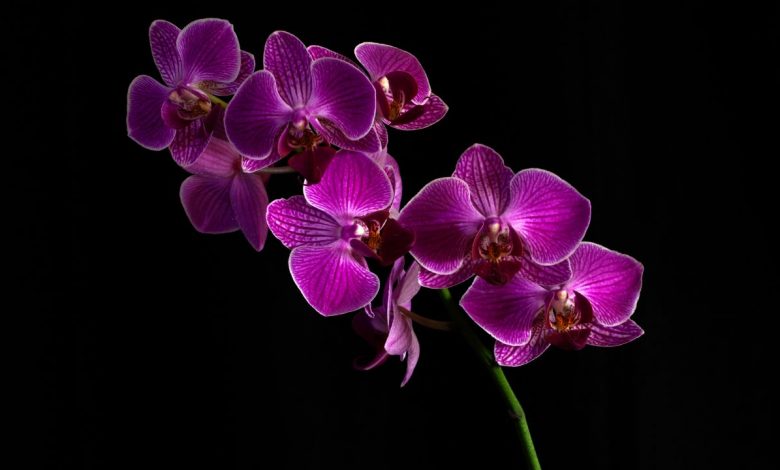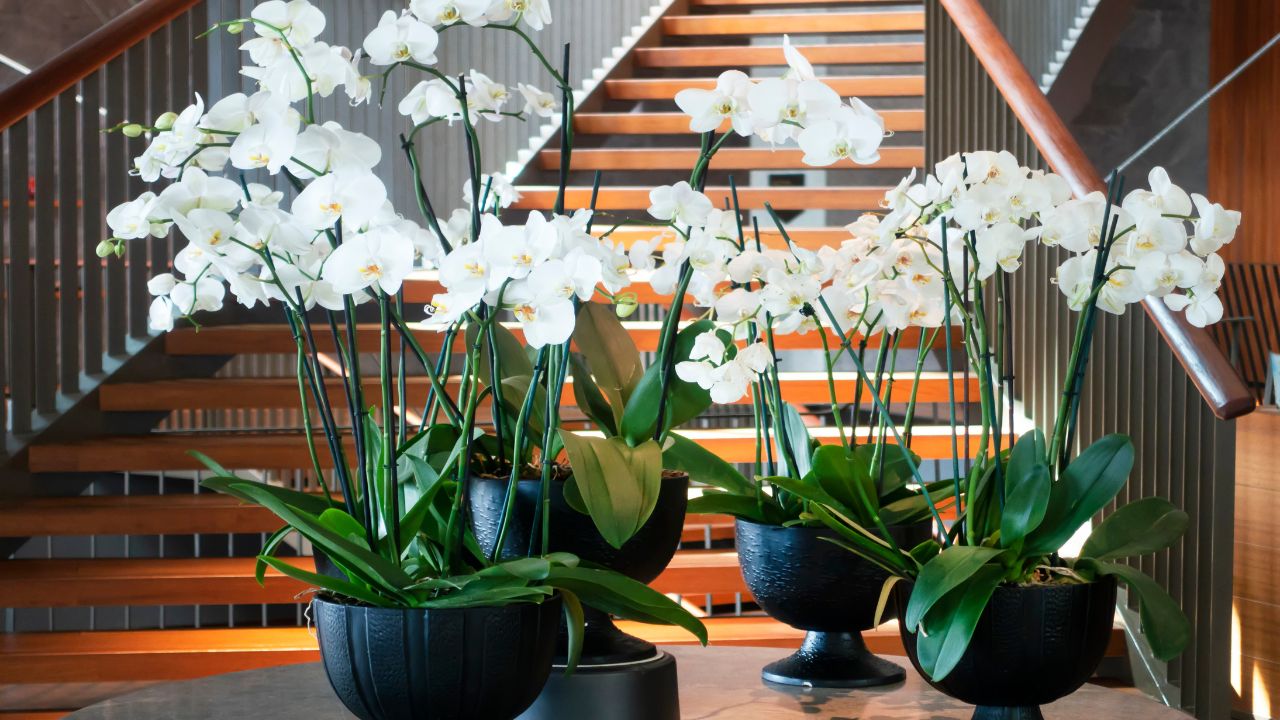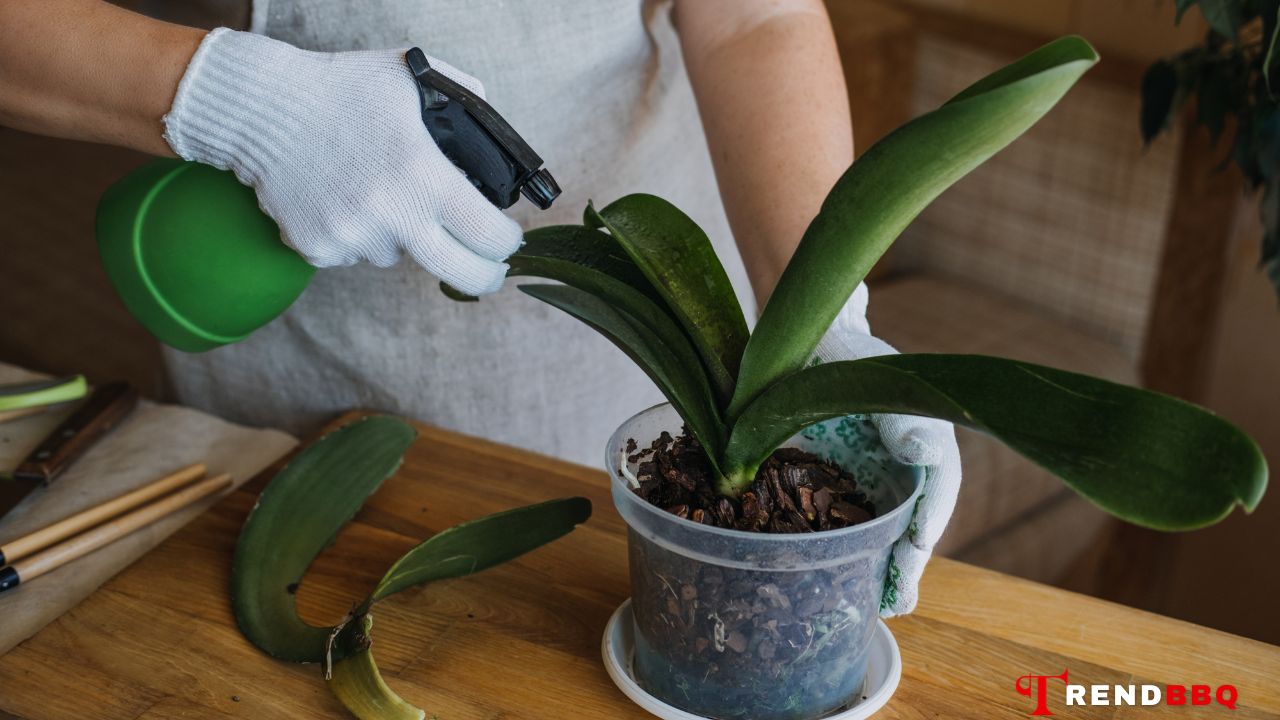
Orchids are one of the most popular and diverse groups of flowering plants, with over 25,000 species and 100,000 hybrids. They are known for their exotic and elegant beauty, as well as their long-lasting blooms. However, many people think that orchids are difficult to grow and maintain, and they often end up killing them by overwatering or exposing them to too much or too little light. In this article, Trendbbq will show you how to care for orchids in 10 easy and proven tips, so you can enjoy these beautiful flowers for years to come.
1. How To Care For Orchids
1.1. Choose the Right Orchid for Your Home
The initial step in orchid care involves selecting the appropriate orchid variety that suits your home environment. Orchids exhibit distinct requirements in terms of light exposure, temperature, humidity levels, and potting materials. Some of the most commonly cultivated and beginner-friendly orchids include:
- Phalaenopsis: Also referred to as moth orchids, these are highly favored among novices due to their striking, long-lasting, and vibrant blossoms. Phalaenopsis orchids thrive in bright, indirect light, with temperatures ranging from 60-80°F, and a humidity level between 50-70%.
- Cattleya: Known for their fragrant and showy flowers, cattleya orchids are reminiscent of classic corsage orchids and are available in a variety of colors and patterns. To ensure their well-being, provide them with bright but indirect sunlight, maintain intermediate temperatures of 55-85°F, and sustain moderate humidity levels between 40-60%.
- Dendrobium: Dendrobium orchids resemble bamboo-like plants with elongated stems that bear clusters of blossoms. They exhibit versatility in light requirements, accommodating conditions ranging from low to high light levels. However, they thrive in temperatures between 50-90°F and prefer moderate humidity levels of 40-60%.
- Oncidium: Often referred to as dancing lady orchids, oncidium orchids feature dainty, delicate flowers reminiscent of butterflies or birds. For optimal growth, provide them with bright, indirect light, maintain cool to warm temperatures of 50-85°F, and ensure a relatively high humidity range of 50-70%.

1.2. Provide Enough Light
Light is one of the most important factors in orchid care, as it affects the growth and flowering of your plants. Orchids need bright but indirect light, as direct sun can burn their leaves and flowers. A good rule of thumb is to place your orchids in a window that faces east or west, where they can receive some morning or afternoon sun. You can also use sheer curtains or blinds to filter the light if it is too intense. If you don’t have enough natural light in your home, you can use artificial lights such as fluorescent tubes or LED bulbs. Keep the lights 6-8 inches above your orchids and leave them on for 12-16 hours a day.
1.3. Water Properly
Watering is another critical aspect of orchid care, as it profoundly impacts the well-being and longevity of your orchids. Orchids require water for hydration and nourishment, but they also require adequate air circulation to prevent root rot. Consequently, it is advisable to water your orchids only when the potting medium is on the verge of drying out, which may occur every few days or every couple of weeks, depending on the specific orchid species and the environmental conditions within your home. When watering your orchids, make use of lukewarm water and drench the potting medium until excess water drains from the bottom of the pot. Allow the pot to drain fully before returning it to its saucer or tray. It is essential to avoid using excessively cold or hot water, as this can harm the roots. Additionally, refrain from watering the leaves or flowers, as it can promote fungal or bacterial infections.

1.4. Fertilize Regularly – How to take care of orchids
Fertilizing your orchids is another method to promote their growth and flowering. Orchids require nutrients for the development of healthy leaves, roots, and blossoms, but they cannot solely obtain these nutrients from their potting medium. Consequently, it is advisable to fertilize your orchids on a weekly basis during the spring and summer when they are actively growing and blooming. Utilize a well-balanced liquid fertilizer, such as 10-10-10 or 20-20-20, to provide your orchids with an even combination of nitrogen, phosphorus, and potassium. Dilute the fertilizer to a quarter-strength and apply it directly to the potting medium after watering. When the orchid ceases to produce flowers, reduce the frequency of fertilization to once a month or discontinue it altogether.
1.5. Choose the Right Potting Medium
Potting medium is another important factor in orchid care, as it affects how much water and air your plants receive. Orchids need a well-draining and airy potting medium that can support their roots without suffocating them. Usually, orchids are potted in either sphagnum moss or bark chips, which both work but need slightly different care.
- Sphagnum moss: This is a natural material that absorbs and retains water, making it ideal for orchids that need high humidity and constant moisture. However, it can also hold too much water and cause root rot if not monitored carefully. Therefore, you should water your orchids less frequently if they are potted in moss, and check the moisture level by squeezing a handful of moss. If it feels wet or drips water, wait until it feels slightly damp before watering again.
- Bark chips: This is a synthetic material that provides good drainage and aeration, making it ideal for orchids that need dry periods between waterings. However, it can also dry out quickly and deprive your plants of water if not watered regularly. Therefore, you should water your orchids more frequently if they are potted in bark, and check the moisture level by inserting a wooden skewer or chopstick into the pot. If it comes out dry or with little bits of bark, it is time to water again.
1.6. Provide Adequate Humidity
Humidity is another factor that affects the health and flowering of your orchids. Orchids need high humidity (50-70%) to prevent their leaves from drying out and wilting. However, most homes have low humidity (30-40%), especially during the winter when the heating system is on. Therefore, you should provide extra humidity for your orchids by using one or more of these methods:
- Mist your orchids daily with a spray bottle filled with water. Avoid misting the flowers, as it can cause spots or rot.
- Place your orchids on a tray filled with pebbles and water. Make sure the water level is below the pebbles, so the pots don’t sit in water. The water will evaporate and create humidity around your plants.
- Use a humidifier near your orchids to increase the moisture in the air. Make sure the humidifier is clean and free of bacteria or mold.
- Group your orchids together to create a microclimate of humidity. The plants will transpire and release moisture into the air.
1.7. Maintain Optimal Temperature
Temperature is another factor that influences the growth and flowering of your orchids. Orchids need a moderate temperature range (55-85°F) to thrive, but they can tolerate some fluctuations depending on the season and the time of day. Most orchids prefer cooler nights and warmer days, as this mimics their natural habitat in the tropics or subtropics. A difference of 10-15°F between day and night temperatures can also trigger blooming in some orchids. However, you should avoid exposing your orchids to extreme temperatures, such as below 50°F or above 90°F, as this can stress or damage them. Also avoid placing your orchids near sources of heat or cold, such as radiators, air conditioners, fireplaces, or drafty windows.
1.8. Prune As Needed – How to care for orchids
Pruning your orchids is another way to keep them healthy and encourage blooming. Pruning involves removing dead or damaged parts of your plants, such as leaves, roots, stems, or flowers. This helps prevent diseases and pests from spreading, as well as improve the appearance and shape of your plants. Here are some tips on how to prune your orchids:
- Use clean and sharp scissors or pruning shears to make clean cuts. Sterilize your tools with rubbing alcohol or bleach before and after each use to prevent infections.
- Remove any yellow, brown, or black leaves from the base of the plant. These are signs of aging or disease, and they can attract pests or fungi.
- Cut off any dead or shriveled roots from the bottom of the pot. These are signs of overwatering or root rot, and they can prevent healthy roots from absorbing water and nutrients.
- Trim off any old flower spikes after they have finished blooming. This will redirect the plant’s energy to producing new growth and flowers. Cut about an inch above a node (a small bump on the stem), where a new spike may emerge.
- Report As Needed
Repotting your orchids is another essential part of orchid care, as it helps refresh their potting medium and give them more room to grow. Orchids need to be repotted every 1-2 years, or when they show signs of needing a new pot, such as:
- The potting medium has broken down and become compacted or soggy.
- The roots have outgrown the pot and are spilling over the edges.
- The plant has become too large or unstable for the pot.
- The plant has stopped blooming or growing.
To repot your orchids, follow these steps:
- Choose a new pot that is slightly larger than the old one, with drainage holes at the bottom. Avoid using pots that are too big, as they can hold too much water and cause root rot.
- Fill the new pot with a fresh potting medium suitable for your type of orchid, such as sphagnum moss or bark chips. You can also add some perlite or charcoal to improve the drainage and aeration of the potting medium.
- Remove the orchid from the old pot and gently shake off the excess potting medium from the roots. Use scissors or pruning shears to cut off any dead or damaged roots, as well as any old or diseased leaves.
- Place the orchid in the center of the new pot and spread the roots evenly over the potting medium. Add more potting medium around the roots until they are covered, but not too tightly packed. Leave some space between the potting medium and the rim of the pot for watering.
- Water the orchid thoroughly and let it drain completely. Place it in a shady spot for a week or two to allow it to adjust to its new home. Resume your normal care routine after that.
2. Meaning of orchids
2.1. Feng shui meaning
- Material meaning: Orchids are central flowers, always attracting positive energies. Not only that, orchids are also a symbol of beauty, bringing meaning to the birth and growth of matter and continuous development.
- Meaning of love: Orchids are plants that symbolize love with strong vitality, shy beauty, often living on tree trunks but are independent in nutrients, like a weak girl. rely on your lover.
- Family meaning: In the family, orchids have the meaning of cohesion, perfection, many children, and harmony between husband and wife.
2.2. Color meaning
Orchids have many different meanings, whereby each color changes its original meaning.
- Orchids have all colors but are not absolutely blue but only slightly pale, they symbolize uniqueness and rarity.
- Red orchids symbolize desire and intensity. In some cases it also symbolizes health and courage.
- Pink orchids represent grace, joy and happiness. Besides, it also symbolizes health and courage.
- White orchids represent respect, humility, purity, purity, luxury and beauty.
- Purple orchids symbolize admiration, respect, dignity and royalty.
- Yellow orchids represent friendship, joy and a new beginning.
- Orange orchids symbolize enthusiasm, boldness and pride.
- Green orchids are always considered a symbol of luck and blessings. It represents good health, nature and longevity.
Hopefully, the instructions on how to care for orchids for beginners as well as the experience of experienced orchids shared by Trendbbq above will help you own large, beautiful pots of orchids and long-lasting flowers.
>>> See more: How to Propagate Hydrangeas: A Simple and Fun Guide
3. FAQs
3.1. How often should I water my orchid?
The frequency of watering depends on factors like the type of orchid, potting mix, and environmental conditions. Generally, it’s best to water orchids when the potting medium is almost dry, usually every 1-2 weeks. Water sparingly and ensure good drainage to prevent root rot.
3.2. What’s the ideal light for orchids?
Orchids thrive in bright, indirect light. Avoid direct sunlight, as it can scorch their leaves. East or north-facing windows are usually good locations. Different orchid species may have varying light requirements, so it’s essential to know your specific orchid’s needs.
3.3. How do I fertilize my orchid, and how often should I do it?
Use a balanced orchid fertilizer, typically with a ratio like 20-20-20. Dilute it to half strength and apply it every 2-4 weeks during the growing season (spring to early autumn). Reduce or stop fertilizing during the dormant period (late autumn to winter).
3.4. What’s the best humidity level for orchids?
Orchids prefer higher humidity levels than most indoor environments. Aim for 50-70% humidity. You can increase humidity by using a humidity tray, a room humidifier, or misting the orchids regularly.



